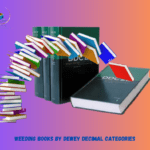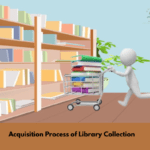The library serves as the heart of an educational institution, embodying a vital resource for teachers and students alike. For educators, pursuing knowledge is a neverending journey; they continuously seek new insights, revisit familiar concepts from fresh perspectives, and unearth new dimensions within their fields of study. In this endeavor, the library proves indispensable. It enriches the knowledge students gain from their teachers’ lectures, offering guidance and supporting their quest for further understanding along their educational journeys.
The specific characteristics and offerings of a college library are intrinsically linked to the nature of the educational institution it serves, reflecting factors such as the quality of education, the domains of study, and the overarching goals of the academic community. The college library acts as a vital nexus, bridging the gap between school education and higher education. It plays a crucial role in shaping students’ academic careers, providing them with the resources they need to thrive.
Functioning both as a physical space and a hub of intellectual engagement, the college library is designed to support students at the college and higher secondary levels, as well as faculty members and staff. Within its walls, students find a conducive environment for reading, studying, and research, equipped with a rich collection of printed and digital materials tailored to fulfill their academic needs.
Moreover, college libraries are dedicated to catering to the diverse requirements of their users, making them pivotal in fostering not only academic success but also a culture of lifelong learning. These libraries are not merely repositories of books but dynamic environments that promote inquiry, exploration, and the continuous pursuit of knowledge, ultimately empowering students and educators to reach their full potential.
Purpose of College Library
A college library serves as a vital institution designed to enhance the educational and research endeavors of students, faculty, and staff. It achieves this by granting access to a diverse array of resources, services, and spaces that encourage learning, inquiry, and intellectual development. The key purposes of a college library can be elaborated as follows:
- Academic Support
The library functions as a fundamental academic resource, offering students access to essential materials such as textbooks, reference books, scholarly journals, and a wealth of electronic resources. These tools are crucial for coursework, facilitating academic success, and helping students navigate the complexities of their subjects.
- Learning Environment
Within its walls, the college library creates a serene and dedicated atmosphere conducive to study. Whether students seek a quiet nook for individual contemplation or collaborative areas for group discussions, the library provides the perfect setting to nurture their intellectual pursuits.
- Skill Development
Emphasizing the importance of information literacy, college libraries actively engage students in learning how to locate, critically evaluate, and effectively utilize information. These skills are indispensable for navigating today’s information rich environment, empowering students to become knowledgeable and discerning users of information.
- Technology and Tools
In the age of technology, college libraries equip users with access to a range of essential tools. This includes computers, software applications, printers, and other digital resources, all tailored to foster digital literacy and enhance academic productivity, ensuring students have the necessary facilities to excel.
- Cultural and Intellectual Enrichment
Beyond traditional academic support, college libraries serve as centers of cultural and intellectual engagement. They host a variety of events, exhibitions, and discussions that promote creativity, cultural understanding, and a commitment to lifelong learning. In this way, a wellresourced college library acts as the intellectual heart of the institution, connecting knowledge, technology, and people in an enriching environment.
Users of college libraries:
The users of college libraries encompass a diverse array of individuals linked to the academic institution, each group serving distinct roles in utilizing library resources. The primary user groups include:
- Students
As the principal stakeholders of the college library, students rely heavily on its resources. They engage with textbooks and various study materials to support their assignments, exam preparations, and projects, making the library an essential ally in their academic journeys.
- Faculty Members
Faculty members leverage the library’s extensive resources for a multitude of purposes, including teaching, conducting research, developing curricula, and staying abreast of the latest advancements in their fields. The library serves as a critical partner in their scholarly endeavors.
- Administrative Staff
Administrative staff members also benefit from the library’s resources, utilizing them to inform institutional projects, develop policies, and pursue professional development opportunities. The library aids in fostering a wellinformed and effective administrative body.
- Visiting Scholars
The college library welcomes visiting scholars—academics from other institutions who may collaborate with faculty or pursue independent research. These scholars enrich the academic community by contributing their expertise and insights, further enhancing the library’s role as a hub of knowledge and collaboration.

Resources of College Library
The collection of a college library is meticulously assembled to effectively meet the educational, research, and cultural demands of its diverse user base. This comprehensive collection generally encompasses a wide array of materials in various formats, ensuring that all users can find the resources they need to succeed academically and personally.
A. Books: Books constitute the fundamental resource of a college library, and there are three primary types of books typically found in this environment:
- Textbooks: These are essential materials directly aligned with course curricula. They provide students with foundational knowledge and are often required for class assignments and examinations. Textbooks are updated frequently to reflect the latest developments in various academic fields.
- Reference Books: This category includes various types of materials, such as encyclopedias, dictionaries, atlases, and handbooks. Reference books are designed for quick consultation and provide valuable information and context. They are crucial for indepth research and are often not intended for checkout.
- Leisure Reading: In addition to academic materials, college libraries curate a selection of fiction, nonfiction, and popular literature. This leisure reading collection serves to enrich students’ extracurricular experiences and encourages reading for pleasure, relaxation, and personal growth.
B. Journals and Periodicals: Journals and periodicals are vital resources within a college library, facilitating access to the latest research and developments in various fields:
- Academic Journals: These peer-reviewed publications provide rigorous, scholarly articles that contribute to ongoing academic discourse and research. They serve as a primary resource for students and faculty engaged in research projects and academic writing.
- Magazines and Newspapers: Both general and subject specific periodicals keep users informed about current events, trends, and developments in a variety of disciplines. They are valuable for context and contemporary discussions, enhancing users’ understanding of their fields of study.
C. Electronic Resources
In our technology driven world, college libraries increasingly collect a variety of electronic resources to provide flexible access to information:
- eBooks: These digital versions of traditional books allow users to access course materials and literature online, providing convenience and increased availability, particularly for students who may not have the means to buy physical copies.
- E-Journals: These online access points enable users to read and download scholarly articles and periodicals remotely. They enhance research capabilities by providing immediate access to a wealth of academic information.
- Databases: Subscription-based resources such as JSTOR, ProQuest, and IEEE Xplore offer extensive collections of academic articles, papers, and journals across diverse fields. These databases are central to academic research and provide important scholarly materials.
- Institutional Repositories: These digital archives house materials produced within the institution, including theses, dissertations, faculty publications, and other significant works. They promote the sharing of knowledge generated by the institution and its members.
D. Audio-Visual Material
As media consumption continues to evolve, audiovisual materials play an increasingly significant role in college libraries:
- CDs/DVDs: These formats include educational videos, documentaries, and multimedia resources that support various academic disciplines and provide alternative learning methods.
- Streaming Services: Access to online platforms and digital content allows users to watch educational and informative videos as part of their research or study routines.
- Audiobooks: These audio formats are particularly useful for students who prefer auditory learning or need supplementary materials for their courses. They provide engaging ways to consume literature and information.
E. Multimedia and Maker Resources
Modern college libraries are embracing innovation through multimedia and maker resources, catering to creative and technical projects. Some libraries feature maker spaces equipped with technology like 3D printers, robotics tools, and other creative equipment. These spaces encourage hands on learning, experimentation, and collaboration among students.
Essential Services Offered by the College Library
In addition to a diverse collection, college libraries also provide essential services that support users in their academic endeavors:
1. Circulation Services: The core function of borrowing books and other materials is facilitated through circulation services, which ensure that resources are available for students’ specific purposes, whether for short term study or extended research.
2. Document Delivery: This essential service allows users to request specific articles or book chapters, which are then delivered via email. This convenience streamlines access to needed materials, especially for remote students.
3. Reference Services: Often considered the heart of library services, reference services involve librarians assisting users with their day-to-day inquiries. They provide expert guidance on locating resources and utilizing research tools effectively.
4. Information Literacy Program: Libraries conduct information literacy programs that educate users on how to identify, evaluate, and employ various information sources. These programs empower students with the skills necessary for effective research and critical thinking.
5. Technology and Digital Services: College libraries often implement technology based services aimed at helping users navigate reading apps, utilize digital resources, and understand the positive applications of AI tools in academic settings.
6. Event Organization: Libraries also take the initiative to organize a variety of activities, including book fairs, seminars, and conferences. These events foster community engagement and encourage a culture of learning and collaboration.
As noted by David Lankes, “Bad libraries build collections; good libraries build services; great libraries build communities.” This underscores the transformative potential of college libraries, emphasizing their role in cultivating an enriching environment for learning and personal development.



